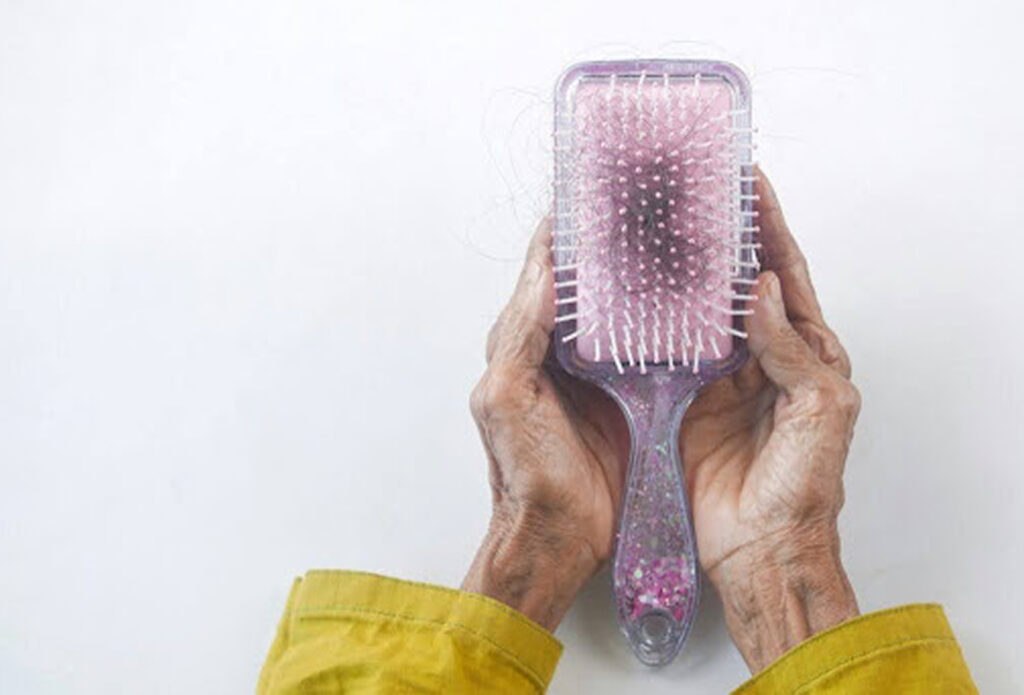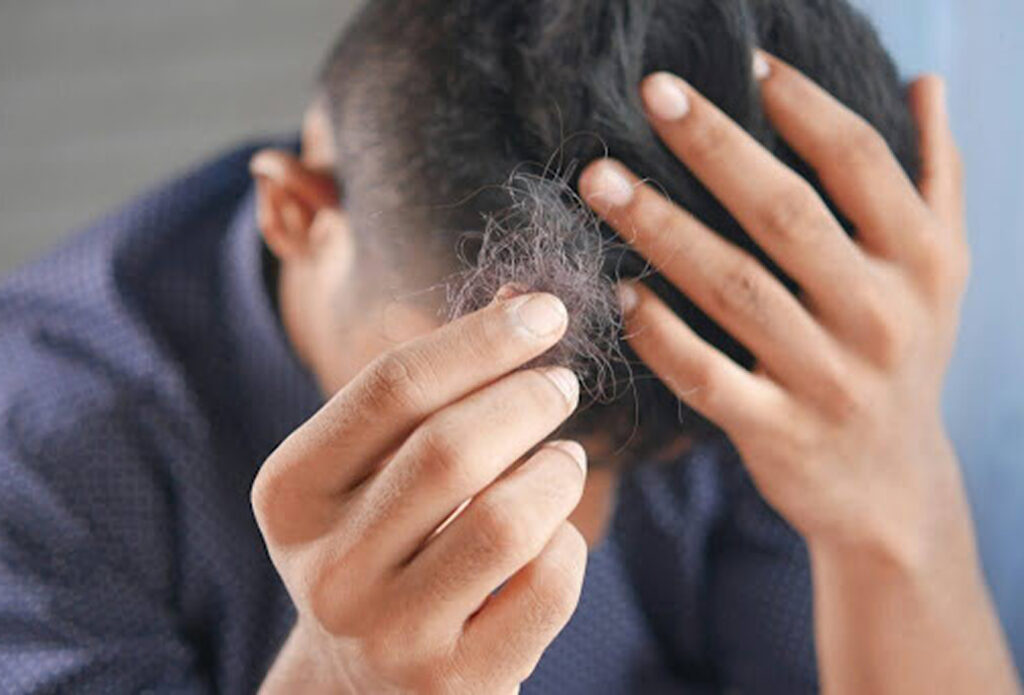The difference between hair shedding and hair loss
- 7 Min Read
Hair retention is a key part of healthy hair growth. Depending on your hair texture, this could be challenging and require more work. Losing hair is often assumed to be universally a bad thing. However, there is a difference between hair shedding and hair loss. In this blog post, we distinguish how to spot if you have hair shedding or hair loss
What is hair shedding?

hair loss in comb
In the hair growth cycle, there is a segment referred to as hair shedding. This is a normal part of the process required for your hair to grow. The hair growth cycle has three main parts. The first being the Anagen (Growth Phase), the second: Catagen (Transition Phase) and the third: Telogen (Resting Phase). The third segment is where the hair shedding happens, making room for new hair to start growing from the hair follicle. Therefore, hair shedding in and of itself is not inherently bad and is, in fact, a necessary step for your hair to remain healthy and grow. However, excessive hair shedding can occur and should be looked into.
What is hair loss?
On the other hand, hair loss often refers to losing hair due to an abnormal cause. Hair loss can refer to both temporary and permanent hair loss. There are many causes for hair loss, and consulting a health professional like a dermatologist could help you diagnose the cause of your hair loss. Some examples of hair loss include chronic conditions like alopecia, or even due to lifestyle changes, triggering stress or tight hairstyles that cause tension on your hair and scalp. Flare-ups from non-hair health issues can also cause hair loss, such as autoimmune diseases like Lupus.
How to spot the difference between hair shedding and hair loss
Signs of hair loss:
1. Hair thinning
Hair thinning is often a sign of hair loss, rather than hair thinning. This should be particularly easier for you to spot if your hair is naturally quite thick. Untrimmed split ends over time or failure to keep your hair moisturised could lead to hair thinning over time.
2. Receding hairline
If your hairline seems to be receding from the front backwards, this could be a sign of hair loss. This symptom is particularly prominent in men more than women and is medically referred to as male pattern baldness or androgenetic alopecia.
3. Smaller ponytail
If you do particular styles often, like a ponytail, and notice that it seems to be smaller in size, this could be a sign of your hair loss. If your hair stops growing completely or at a significantly reduced rate, this is more likely to fall under the category of hair loss. This is linked to the hair density, which relates to the number of hair strands that grow per square inch of your scalp.
The lack of hair density will appear as if you have less hair and hair thinning. Monitoring the fullness of your hair strands over time, as well as closely examining the scalp, can help you assess if the lack of hair density is due to hair loss.

man holding hair loss
4. Bald spots
If you notice circular patches of baldness in your hair, this is almost certainly referring to hair loss rather than hair shedding. This could be a symptom of a hair condition like alopecia.
5. Widening part
When parting sections of your hair, if you notice that there are sections of your hair where it seems to be widening, this could indicate hair loss and could be linked to hair thinning and pattern hair loss.
Signs of hair shedding
1. Duration
The telogen effluvium phase of the hair growth sequence usually lasts under 6 months, although it can go beyond this time, too. This is hair shedding. So monitoring the length of time you've noticed your hair has fallen out and the amount of hair can help with understanding if you have hair loss or hair shedding.
2. Affected Area
Hair shedding, especially if it's part of the hair growth phase, likely happens across the whole of the scalp. The normal amount of hair shedding is roughly 50-100 hairs per day. Monitoring the amount of hair that seems to be falling out can help you better decipher if it's hair shedding or hair loss. Hair loss is likely to be a more noticeable amount of hair, whereas hair shedding is likely to be more moderate.
3. Excessive hair shedding
Excessive hair shedding is similar to hair loss in the sense that it is shedding abnormal amounts of hair that are outside the typical amount within the hair growth telogen effluvium phase. Again, if you're noticing a significant amount of hair falling out, consult a hair and scalp professional.
At COIL, we offer curated hair care for your hair conditions. All our prescriptions are formulated by clinicians and you get a dermatologist consultation for personalized care for your hair. Take your hair quiz to start your hair care journey here.